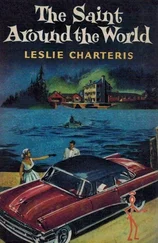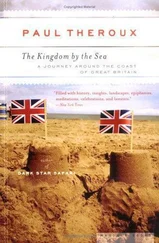Rick Spilman - Hell Around the Horn
Здесь есть возможность читать онлайн «Rick Spilman - Hell Around the Horn» весь текст электронной книги совершенно бесплатно (целиком полную версию без сокращений). В некоторых случаях можно слушать аудио, скачать через торрент в формате fb2 и присутствует краткое содержание. Жанр: Морские приключения, на английском языке. Описание произведения, (предисловие) а так же отзывы посетителей доступны на портале библиотеки ЛибКат.
- Название:Hell Around the Horn
- Автор:
- Жанр:
- Год:неизвестен
- ISBN:нет данных
- Рейтинг книги:4 / 5. Голосов: 1
-
Избранное:Добавить в избранное
- Отзывы:
-
Ваша оценка:
- 80
- 1
- 2
- 3
- 4
- 5
Hell Around the Horn: краткое содержание, описание и аннотация
Предлагаем к чтению аннотацию, описание, краткое содержание или предисловие (зависит от того, что написал сам автор книги «Hell Around the Horn»). Если вы не нашли необходимую информацию о книге — напишите в комментариях, мы постараемся отыскать её.
Lady Rebecca
Hell Around the Horn
Hell Around the Horn — читать онлайн бесплатно полную книгу (весь текст) целиком
Ниже представлен текст книги, разбитый по страницам. Система сохранения места последней прочитанной страницы, позволяет с удобством читать онлайн бесплатно книгу «Hell Around the Horn», без необходимости каждый раз заново искать на чём Вы остановились. Поставьте закладку, и сможете в любой момент перейти на страницу, на которой закончили чтение.
Интервал:
Закладка:
Crosstrees– two horizontal struts at the upper ends of the topmasts used to anchor the shrouds from the topgallant mast.
Davits– frames used to store ships boats which can be quickly swung over the side to allow the boats to be lowered.
Deal planks– A softwood plank, often fir or pine.
Dogwatch– a work shift, between 1600 and 2000 (4pm and 8pm). This period is split into two, with the first dog watch from 1600 to 1800 (4pm to 6pm) and the second dog watch from 1800 to 2000 (6pm to 8pm). Each of these watches is half the length of a standard watch. Effect of the two half watches is to shift the watch schedule daily so that the sailors do not stand the same watch every day. See Watches.
Doldrums– region of the ocean near the equator, characterized by calms, light winds, or squalls.
Donkey boiler– A steam boiler on a ship deck used to supply steam to deck machinery.
Donkey's breakfast– a thin sailor's mattress typically filled with straw.
Downhaul– A line used to pull down a sail or yard
Fife rail– a rail at the base of a mast of a sailing vessel, fitted with pins for belaying running rigging. See P in rail.
Figurehead– a carved wooden decoration, often of person, at the prow of a ship. While figureheads are often carvings of women, they can also be of men as well as animals or mythological creatures.
Flying jib– a sail outside the jib on an extension of the jibboom.
Fo'c'sle house, or fo'c'sle– the accommodation space for sailors. At one time in merchant ships, sailors were berthed in the raised forward part of the ship referred to as the fo'c'sle. Later when the accommodations were moved to a cabin on the main deck the deck house continued to be referred to as the fo'c'sle.
Footropes– a rope of cable secured below a yard to a provide a place for a sailor to stand while tending sail.
Fore-reaching– a form of heaving-to in which the ship continues to slowly sail forward on a close reach rather than losing ground and drifting backward.
Foremast– the forward-most mast.
Foresail– the fore course, the lowest square sail on the foremast.
Forestay– stay supporting the foremast.
Freeboard– the amount of ship's hull above the water, the distance from the waterline to the deck edge.
Freeing port– in a steel bulwark, a heavy hinged flap that allows water on deck to flow overboard.
French leave– slang, departing without permission, explanation or leave.
Furious Fifties– the name given to strong westerly winds found in the Southern Hemisphere, generally between the latitudes of 50 and 60 degrees.
Futtock shrouds– shrouds running from the outer edges of a top downwards and inwards to a point on the mast or lower shrouds, and carry the load of the shrouds that rise from the edge of the top. See Shroud.
Gammoning band– The lashing or iron band by which the bowsprit of a vessel is secured to the stem to opposite the lifting action of the forestays.
Gantline– a line rove through a block for hoisting rigging, spars, provisions or other items.
Gaskets– gaskets are lengths of rope or fabric used to hold a stowed sail in place, on yachts commonly called sail ties.
Gunwale– also gunnel, the upper deck edge of a ship or boat.
Half-deck– the cabin where the apprentices are lodged. The location of the half-deck can vary between ships, from the cabin to the tween deck to a separate cabin on deck. The half-deck refers not to a specific location but to its function as home to the apprentices.
Halyards– a line used to raise a sail or a yard. Originally from "haul yard.”
Harriet Lane– slang for canned meat. Harriet Lane was a murder victim, who was chopped up by her killer around 1875. Merchant sailors came to call any canned meat, Harriet Lane.
Hatch– an opening in the deck of a ship. The main deck hatches are the main access for loading and discharging ship's cargo.
Hatch coaming– A raised frame around a hatch; it forms a support for the hatch cover.
Hatch cover– planks usually held together by metal strapping which form a rectangular panel. These were supported over a hatch by hatch beams. The hatch covers were then made watertight by stretching a tarpaulin across the hatch which was held tight by wedges.
Hatch wedges– wedges used to secure the hatch tarpaulin
Hawser– a thick cable or rope used in mooring or towing a ship.
Heave to, hove to– in extreme weather conditions, to heave to allows the ship to keep a controlled angle to the wind and seas by balancing effects the reduced sail and and a lashed helm, to wait out the storm. The ships drifts backwards slowly generally under control without the need for active sail-handling.
Jackstay– an iron rod, wooden bar, or wire rope along a yard to which the sails are fastened.
Jarvis Patent brace winch– a manual winch invented by Captain John Charles Barron Jarvis that drastically reduced the number of sailors required to brace the sails. The winch also improved crew safety as it moved the sailors toward centerline and away from the ship's rail, decreasing the chance of sailors being swept overboard or injured by boarding waves. Notwithstanding that the winches were very successful, they were never adopted on British or American ships.
Jib– a triangular staysail that sets ahead of the foremast
Jib-boom– a spar used to extend the length of a bowsprit on sailing ships.
Latitude– a measure of the north-south position on the Earth's surface. Lines of latitude, or parallels, run east–west as circles parallel to the equator. Latitude ranges from 0° at the Equator to 90° at the poles.
Lazarette– a below deck storage area in the stern of the ship
Leeward– the direction away from the wind.
Lee rail– The deck edge on the side of the ship away from the direction from which the wind is blowing. The weather railis the on the other side of the ship.
Limey– slang for a British sailor or ship. Also called lime juicers. From the British policy of issuing lime or lemon juice to sailors to prevent scurvy on long passages.
Liverpool deck– on some of the later windjammers, an accommodations cabin/deck amidships which spanned the entire beam of the ship.
Liverpool pantiles– slang for hard bread said to resemble roofing tile in shape, consistency and flavor.
Local Apparent Noon– the moment when the sun is observed to be at its highest point in its travel across the sky. By measuring the altitude (the angular distance from the horizon) and noting the time difference between Local Apparent Noon and Greenwich time, a ship's officer can determine the ship's latitude and longitude. See Sun Sightand Sextant.
Longitude– a measurement of the east-west position on the Earth's surface, an angular measurement, usually expressed in degrees. Points with the same longitude lie in lines running from the North Pole to the South Pole. By convention, one of these, the Prime Meridian, which passes through the Royal Observatory, Greenwich, England, establishes the position of zero degrees longitude. The longitude of other places is measured as an angle east or west from the Prime Meridian, ranging from 0° at the Prime Meridian to +180° eastward and –180° westward.
Читать дальшеИнтервал:
Закладка:
Похожие книги на «Hell Around the Horn»
Представляем Вашему вниманию похожие книги на «Hell Around the Horn» списком для выбора. Мы отобрали схожую по названию и смыслу литературу в надежде предоставить читателям больше вариантов отыскать новые, интересные, ещё непрочитанные произведения.
Обсуждение, отзывы о книге «Hell Around the Horn» и просто собственные мнения читателей. Оставьте ваши комментарии, напишите, что Вы думаете о произведении, его смысле или главных героях. Укажите что конкретно понравилось, а что нет, и почему Вы так считаете.












